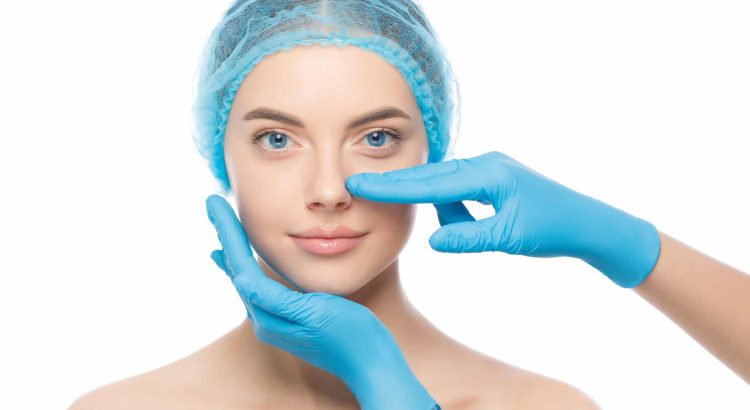Rhinoplasty, also known as a nose job, is a cosmetic surgical procedure that aims to enhance the shape and size of the nose. It is a popular choice for those who are dissatisfied with the appearance of their nose and wish to achieve a more proportionate and balanced facial profile. But who is a good candidate for rhinoplasty? How is the procedure performed? What are the risks and complications associated with it? In this blog post, we will delve into these questions and more, exploring the recovery process, the final results, and alternative options to rhinoplasty.
Contents;
What Is Rhinoplasty?

Rhinoplasty, also known as a nose job, is a surgical procedure that aims to reshape the nose to improve its appearance or enhance its functionality. It is one of the most commonly performed cosmetic surgeries in the world, with thousands of individuals opting for this procedure each year. Rhinoplasty can address a wide range of concerns, including a crooked nose, a hump on the bridge, a bulbous tip, or even breathing difficulties.
During a rhinoplasty procedure, the surgeon carefully makes incisions to access the underlying structures of the nose. They may then reshape the bone and cartilage, remove excess tissue, or add grafts to achieve the desired results. The specific techniques used will depend on the individual’s unique nasal structure and goals. It is crucial to consult with a skilled and experienced surgeon to discuss your expectations, concerns, and potential outcomes.
Like any surgical procedure, rhinoplasty carries some risks and potential complications. These can include infection, bleeding, adverse reaction to anesthesia, scarring, or dissatisfaction with the results. However, by choosing a reputable surgeon and following post-operative instructions, the chances of experiencing complications can be significantly reduced.
- Rhinoplasty is not just about improving one’s physical appearance; it can also have a positive impact on a person’s self-esteem and overall well-being. Enhancing the shape and symmetry of the nose can bring balance to the face and improve facial harmony. This newfound confidence can extend to various aspects of a person’s life, from personal relationships to professional opportunities.
- In addition to its cosmetic benefits, rhinoplasty can also address functional issues. Some individuals may have difficulty breathing due to a deviated septum, nasal obstructions, or other structural abnormalities. Rhinoplasty can correct these issues, allowing for improved airflow and a significant enhancement in quality of life.
| Risks and Complications of Rhinoplasty: |
|---|
| 1. Infection |
| 2. Bleeding |
| 3. Adverse reaction to anesthesia |
| 4. Scarring |
| 5. Dissatisfaction with results |
Who Is A Good Candidate For Rhinoplasty?
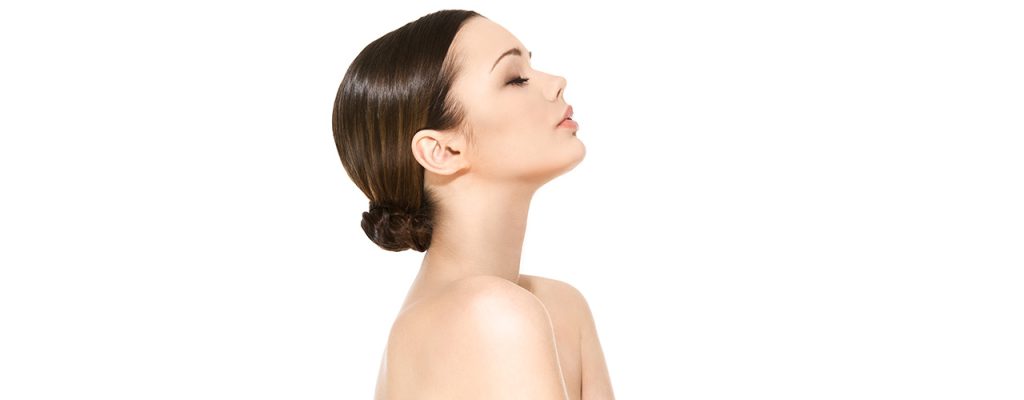
Deciding to undergo rhinoplasty is a big decision. It is important to understand that not everyone is a good candidate for this procedure. There are certain factors that determine whether someone is a suitable candidate for rhinoplasty or not.
1. Physical Health: One key factor in determining if someone is a good candidate for rhinoplasty is their overall physical health. A person should be in good health, free from any chronic medical conditions that could impair healing. It is important for candidates to disclose their complete medical history to their surgeon before undergoing the procedure.
2. Emotional Health: Rhinoplasty can have a significant impact on a person’s self-esteem and body image, so it is crucial for candidates to have realistic expectations and a positive mindset. They should understand that rhinoplasty can enhance their appearance, but it may not magically solve all their personal problems or make them a completely different person.
3. Age: While there is no specific age limit for rhinoplasty, it is generally recommended for individuals who have reached physical maturity. This is because the nose continues to grow and develop until the late teens or early twenties, and it is important to ensure that any changes made during rhinoplasty will harmonize with the rest of the facial features in the long term.
- 4. Specific Concerns: Candidates for rhinoplasty often have specific concerns about their nose, such as a hump on the bridge, a crooked or disproportionate shape, or difficulty breathing. These concerns should be discussed with the surgeon during the consultation process to determine if rhinoplasty can address and improve these issues.
It is important for potential candidates to have a detailed consultation with a qualified and experienced plastic surgeon to assess their suitability for rhinoplasty. During the consultation, the surgeon will evaluate the candidate’s nose structure, discuss their goals and expectations, and provide recommendations for the best course of action.
| Summary |
|---|
| Not everyone is a good candidate for rhinoplasty, and there are several factors that should be considered when determining suitability. These factors include physical and emotional health, age, and specific concerns about the nose. A detailed consultation with a qualified surgeon is essential to assess a person’s suitability and discuss their goals and expectations. |
How Is Rhinoplasty Performed?

Rhinoplasty, also known as a nose job, is a surgical procedure that aims to reshape or reconstruct the nose. It is a complex and intricate procedure that requires the expertise and skill of a qualified plastic surgeon. The process of rhinoplasty involves careful planning, precise execution, and attention to detail to achieve the desired results.
During the procedure, the surgeon makes incisions either inside the nostrils or across the base of the nose, known as an open rhinoplasty. Through these incisions, the surgeon gains access to the underlying cartilage and bone structures of the nose. They then reshape and sculpt the nose to improve its appearance or address functional issues such as breathing difficulties or septum deviation.
In some cases, additional support may be necessary to achieve the desired result. This can be accomplished through grafting techniques, where cartilage from other parts of the body, such as the ear or rib, is used to provide structural support to the nose. Once the reshaping is complete, the surgeon will close the incisions and apply a splint or cast to support the nose during the healing process.
- The rhinoplasty procedure involves several steps to ensure a successful outcome. First, the surgeon will conduct a thorough evaluation of the patient’s nose and facial features to understand their goals and expectations. They will discuss the various options and techniques available, as well as any potential risks and complications.
- During the surgery, the surgeon carefully reshapes the cartilage and bone structures of the nose to achieve the desired shape and size. They may use techniques such as removing excess tissue, adding grafts for support, or adjusting the nasal bridge or tip.
- After the surgery, the patient will need to follow the post-operative care instructions provided by the surgeon. This may include keeping the nose elevated, avoiding strenuous activities, and taking prescribed medications to manage pain and reduce the risk of infection. It is important to follow these instructions closely to ensure proper healing and optimal results.
| Rhinoplasty Procedure Steps |
|---|
| 1. Consultation and evaluation |
| 2. Surgical planning |
| 3. Incision and access |
| 4. Reshaping and sculpting |
| 5. Support grafting (if necessary) |
| 6. Incision closure and splint application |
| 7. Post-operative care and follow-up |
In conclusion, rhinoplast is a complex surgical procedure that involves careful planning, precise execution, and a focus on achieving the desired results. It requires the expertise and skill of a qualified plastic surgeon who can reshape and reconstruct the nose to improve its appearance or address functional issues. By following the proper steps and post-operative care, patients can achieve the nose they desire and boost their self-confidence.
What Are The Risks And Complications Of Rhinoplasty?
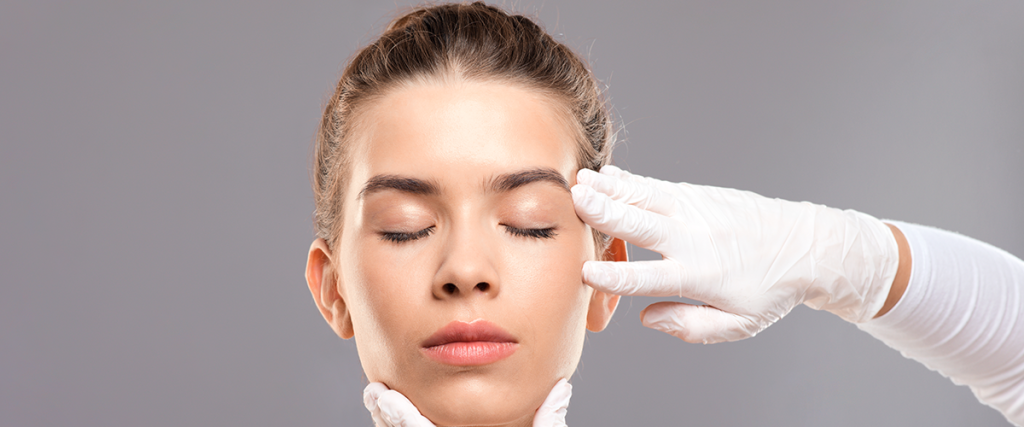
When it comes to enhancing one’s appearance, rhinoplasty, or commonly known as a nose job, is a popular choice for many individuals. However, like any other surgical procedure, it is important to be aware of the risks and possible complications that can arise. Understanding these potential issues can help you make an informed decision and ensure a successful outcome.
One of the primary risks of rhinoplasty is the possibility of infection. After the surgery, the patient’s nose is vulnerable to bacteria and other pathogens. It is crucial to carefully follow the post-operative care instructions provided by your surgeon to minimize the risk of infection. Additionally, there is also a chance of excessive bleeding during or after the procedure. While this is relatively rare, patients should be aware of the potential and notify their surgeon immediately if they experience prolonged bleeding.
Another complication that can occur following rhinoplasty is adverse reactions to anesthesia. Although rare, some individuals may have allergic reactions or experience other complications related to the administration of anesthesia. It is essential to disclose your complete medical history to your surgeon to minimize the risk of such reactions. Your surgeon will carefully evaluate your suitability for anesthesia and take necessary precautions to ensure your safety throughout the procedure.
- Risk of infection
- Possible excessive bleeding
- Adverse reactions to anesthesia
| Risk | Complication |
|---|---|
| Infection | Possible post-operative vulnerability to bacteria |
| Excessive Bleeding | Rare, but can occur during or after the procedure |
| Adverse Reactions to Anesthesia | Possible allergic reactions or complications related to anesthesia |
Although unlikely, some patients may also experience complications in the healing process following rhinoplasty. These can include scarring, asymmetry, or changes in skin sensation. Your surgeon will discuss these possibilities with you during your consultation to manage your expectations and ensure you have realistic goals for the outcome of the procedure.
It is important to remember that these risks and complications are relatively rare, and with proper preparation and a skilled surgeon, the majority of rhinoplasty procedures are successful. By choosing a qualified and experienced plastic surgeon, following the post-operative care instructions diligently, and maintaining open communication with your surgeon, you can minimize the risks associated with this procedure.
In conclusion, while rhinoplast can be a life-changing procedure, it is essential to be aware of the potential risks and complications involved. Understanding and discussing these with your surgeon will help you make an informed decision and ensure you are well-prepared for the outcome. By choosing a reputable surgeon and closely following all guidelines, you can significantly reduce the likelihood of encountering any complications. With the right approach, rhinoplasty can be a transformative journey towards increased confidence and self-esteem.
What Are the Risks of Rhinoplasty?
What Is The Recovery Process Like After Rhinoplasty?

Rhinoplasty, also known as a nose job, is a surgical procedure that aims to improve the appearance and function of the nose. It is a popular cosmetic surgery option for those who are unhappy with the shape or size of their nose or have breathing problems. While the procedure itself is important, the recovery process plays a crucial role in achieving the desired results. Understanding what to expect during the recovery process can help patients prepare both physically and emotionally.
The recovery process after rhinoplasty varies from person to person, but there are some common milestones and guidelines that most patients can anticipate. Immediately after the surgery, patients will experience swelling, bruising, and some discomfort. The nose will be covered with a splint and possibly nasal packing to protect and support the healing structures. It is essential to follow the surgeon’s instructions regarding aftercare, which may include using cold compresses, keeping the head elevated, and avoiding certain activities or medications that could interfere with healing.
During the first week of recovery, patients should expect bruising and swelling to peak before gradually subsiding. Pain and discomfort can also be managed with prescribed medications. Rest and relaxation are crucial during this time, as strenuous activities should be avoided. It is important to remember that the healing process takes time and patience. The initial recovery phase usually lasts about two weeks, during which the swelling will continue to decrease, and bruising will fade.
After this initial period, patients can begin to enjoy the gradual improvement in their appearance. However, it is important to note that the final results of rhinoplasty may take several months to a year to fully manifest. As the healing process continues, patients may experience occasional swelling, especially in the mornings or after physical exertion. Following a healthy lifestyle, including a balanced diet and regular exercise, can help promote healing and optimize the results of the procedure.
How Long Does It Take To See The Final Results Of Rhinoplasty?
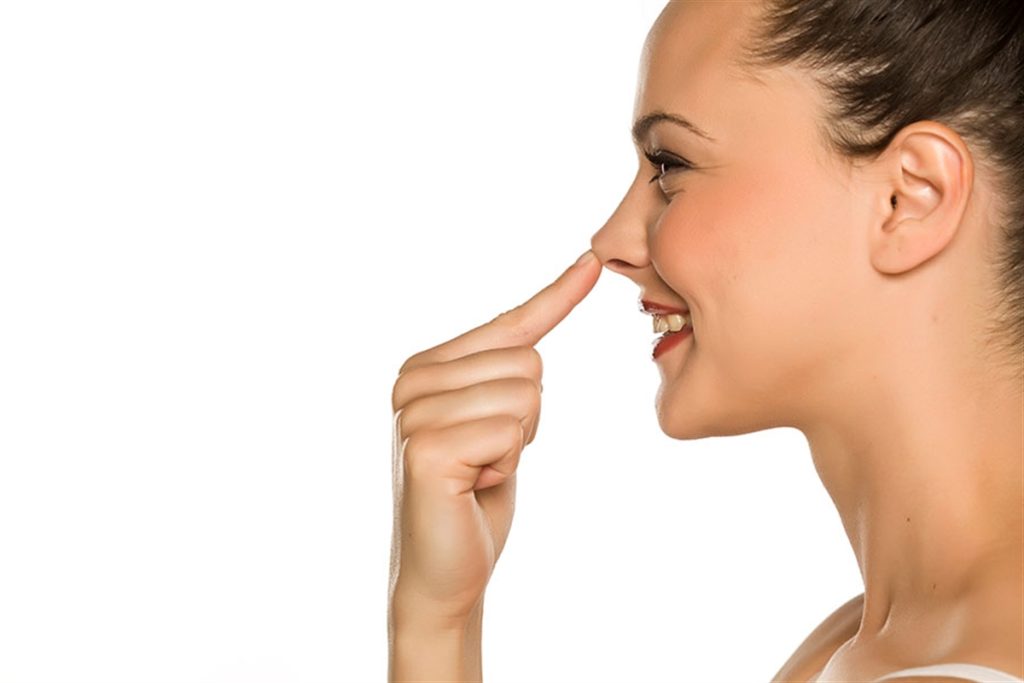
One of the most commonly asked questions about rhinoplasty is how long it takes to see the final results. It’s understandable that patients are eager to see the outcome of their surgery and enjoy their new look. However, it’s important to remember that rhinoplasty is a complex procedure that requires time for the body to heal and for the swelling to subside.
After the surgery, the nose will be wrapped in a splint and there may be some packing inside the nostrils to support the new shape. This is usually removed within a week. However, the initial healing process can take several weeks, and you may experience some swelling and bruising around the nose and under the eyes. It’s important to follow your surgeon’s post-operative instructions and take any prescribed medications to help with the healing and reduce discomfort.
Most of the swelling will subside within the first few weeks, but it’s important to note that it can take several months, and even up to a year, for the final results to become fully visible. This is because the tissues of the nose need time to heal, reshape, and settle into their new form. The gradual reduction of swelling and the final refinement of the nose’s appearance can sometimes be a slow process, but it’s important to be patient and allow your body to heal at its own pace.
| Benefits of Rhinoplasty | Risks and Complications of Rhinoplasty |
|---|---|
|
|
It’s important to communicate openly with your surgeon throughout the healing process. They will provide you with guidance on what to expect and will monitor your progress to ensure that everything is healing as it should. Remember that each individual heals differently, and your results may vary from someone else’s. However, by following your surgeon’s instructions and being patient, you will eventually see the final results of your rhinoplasty and enjoy the benefits of your enhanced appearance.
Can Rhinoplasty Fix Breathing Problems?
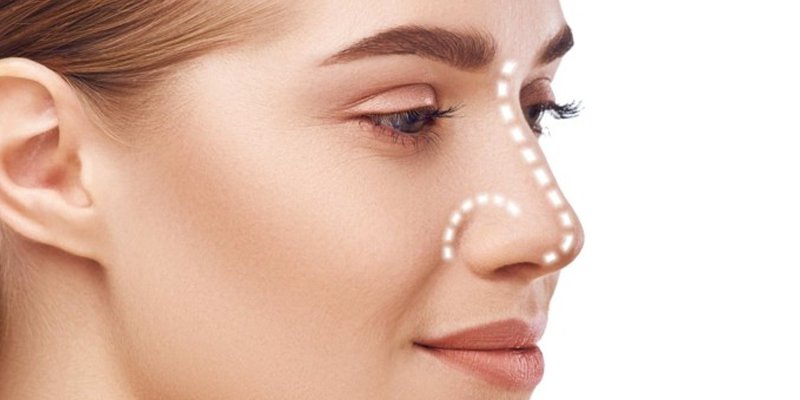
Rhinoplasty for Breathing Problems: A Life-Changing Solution
Are you struggling with breathing problems that are affecting your quality of life? If so, you may be wondering if rhinoplasty can provide a solution. Rhinoplasty, commonly known as a nose job, is a cosmetic procedure that is primarily performed to enhance the appearance of the nose. However, it can also be used to address functional issues, such as breathing difficulties. Let’s explore how rhinoplasty can potentially fix breathing problems and improve your overall well-being.
1. Identifying the Underlying Cause
In order to determine whether rhinoplasty is a suitable option for fixing breathing problems, it is crucial to identify the underlying cause. There are various factors that can contribute to breathing difficulties, including structural abnormalities, deviated septum, or enlarged turbinates. During a consultation with a qualified plastic surgeon, they will thoroughly assess your nasal anatomy and diagnose the specific issue causing your breathing problems.
2. Correcting Structural Abnormalities
If your breathing problems are caused by structural abnormalities in your nose, rhinoplasty can help correct these issues. The surgery involves reshaping and repositioning the nasal structures to improve airflow and optimize nasal function. The surgeon may modify the septum, reduce nasal turbinates, or adjust the nasal cartilage and bone to create a more open and functional nasal passage.
3. Enhancing Nasal Function
Rhinoplast not only focuses on aesthetics but also aims to enhance nasal function. By addressing the underlying cause of your breathing problems, the surgery can improve your ability to breathe easily and comfortably. Whether it’s reducing nasal congestion, eliminating breathing obstructions, or enhancing airflow, rhinoplasty can have a profound impact on your respiratory function and overall quality of life.
The Importance of a Skilled Surgeon
When considering rhinoplasty for breathing problems, it is crucial to choose a qualified and experienced plastic surgeon. They will have the expertise to accurately diagnose your nasal issues and develop a personalized surgical plan to optimize your results. With their skillful techniques and attention to detail, they can ensure that your rhinoplasty not only addresses your breathing difficulties but also achieves a harmonious and attractive nasal appearance.
The Path to a Breath of Fresh Air
Suffering from breathing problems can be incredibly frustrating and impact your overall well-being. However, with options like rhinoplasty available, you don’t have to suffer in silence. By consulting with a skilled plastic surgeon, you can explore the potential of rhinoplasty to fix your breathing problems and pave the way to a life filled with easy, comfortable breathing. Don’t let breathing difficulties hold you back – consider rhinoplasty as a life-changing solution for better respiratory function.
Is Rhinoplasty A Painful Procedure?
Rhinoplasty, also known as a nose job, is a cosmetic procedure aimed at enhancing the appearance of the nose. Many individuals who are considering rhinoplasty often wonder about the pain associated with the procedure. The truth is, undergoing any surgical procedure can cause some level of discomfort. However, advancements in medical technology and anesthesia techniques have significantly minimized the pain experienced during rhinoplasty.
During a rhinoplasty procedure, the surgeon will make incisions in order to reshape the nose. These incisions are usually made inside the nose or along the base of the nostrils, ensuring that any scarring is discreet and minimal. The surgeon will then adjust the bone, cartilage, and tissue to achieve the desired result. While this may sound intimidating, it’s important to note that anesthesia will be administered to ensure you remain completely comfortable throughout the procedure.
After the surgery, some discomfort can be expected, but the level of pain varies from person to person. It is common to experience swelling, bruising, and tenderness around the nose area. Your surgeon may prescribe pain medication to help manage any discomfort during the initial recovery period. It is crucial to follow your surgeon’s post-operative instructions to minimize any potential pain and ensure a smooth healing process.
- Rhinoplast is typically not considered a painful procedure, thanks to modern medical advancements.
- Anesthesia is used during the surgery to ensure the patient’s comfort and minimize pain.
- Although some discomfort can be expected during the recovery period, it can be managed with prescribed pain medication and following the surgeon’s instructions.
| Keywords: | Rhinoplasty | procedure | painful |
|---|---|---|---|
| discomfort | |||
| surgical | recovery |
How Much Does Rhinoplasty Cost?
Rhinoplasty is a cosmetic surgical procedure that aims to reshape or resize the nose. It is a popular procedure among individuals who are dissatisfied with the appearance of their nose and wish to enhance their facial harmony. However, one common concern that potential candidates have is the cost of rhinoplasty.
The cost of rhinoplasty can vary depending on several factors such as the surgeon’s experience, the location of the clinic, the complexity of the procedure, and any additional fees. On average, the cost of rhinoplasty can range from $5,000 to $10,000. It is essential to keep in mind that this is just an estimate, and the actual cost may be higher or lower.
When considering the cost of rhinoplasty, it is also crucial to take into account the long-term benefits and satisfaction that it can bring. Rhinoplasty is not only a physical transformation but also an opportunity to boost self-confidence and improve overall well-being. The investment in oneself and the positive impact it can have on various aspects of life is priceless.
Are There Any Alternative Options To Rhinoplasty?
Undergoing rhinoplasty, also known as a nose job, is a major decision that requires careful consideration. While rhinoplasty can be an effective solution for those seeking to enhance their nasal appearance or address functional issues, it is not the only option available. If you are hesitant about undergoing surgery or simply exploring alternative options, it is important to know that there are non-surgical alternatives to rhinoplasty that can help you achieve your desired results.
One alternative option to rhinoplasty is non-surgical nose reshaping. This technique involves the use of dermal fillers to enhance specific areas of the nose, such as smoothing out bumps or improving symmetry. Non-surgical nose reshaping is a quick and relatively painless procedure that can be performed in a clinic or medical spa setting. It provides immediate results and has little to no downtime, allowing patients to resume their daily activities shortly after the procedure.
Another alternative option to consider is nasal contouring with makeup. By using certain makeup techniques and products, you can create the illusion of a more sculpted and refined nose. For example, using a contouring powder or cream that is a shade darker than your skin tone along the sides of your nose can make it appear narrower. Similarly, highlighting the bridge of your nose with a light shimmering powder can create the illusion of height.
Additionally, if your concerns are primarily related to breathing difficulties or functional issues, you may explore non-surgical treatments or therapies. Consult with an experienced otolaryngologist (ear, nose, and throat specialist) who can assess your specific condition and recommend appropriate alternatives. In some cases, nasal congestion or obstruction can be improved through medication, nasal sprays, or targeted exercises. These non-invasive options may provide relief without the need for surgical intervention.
- Rhinoplast offers a permanent solution to nose-related aesthetic or functional concerns, and it is important to consult with a qualified plastic surgeon who can provide personalized recommendations based on your unique needs and desires.
| Pros of alternative options to Rhinoplast include: | Cons of alternative options to rhinoplasty include: |
| – Non-surgical options are less invasive and typically require minimal downtime. – They can provide immediate results without the need for surgery. – Non-surgical options are generally less expensive than rhinoplasty. – Makeup techniques allow for temporary nose reshaping without any commitment. | – Non-surgical options may not be suitable for individuals with more complex nasal concerns. – The results of non-surgical options are temporary and may require regular maintenance or touch-ups. – Makeup techniques are not a permanent solution and may not be suitable for all skin types or tones. – Non-surgical options may not address functional issues or breathing difficulties. |
